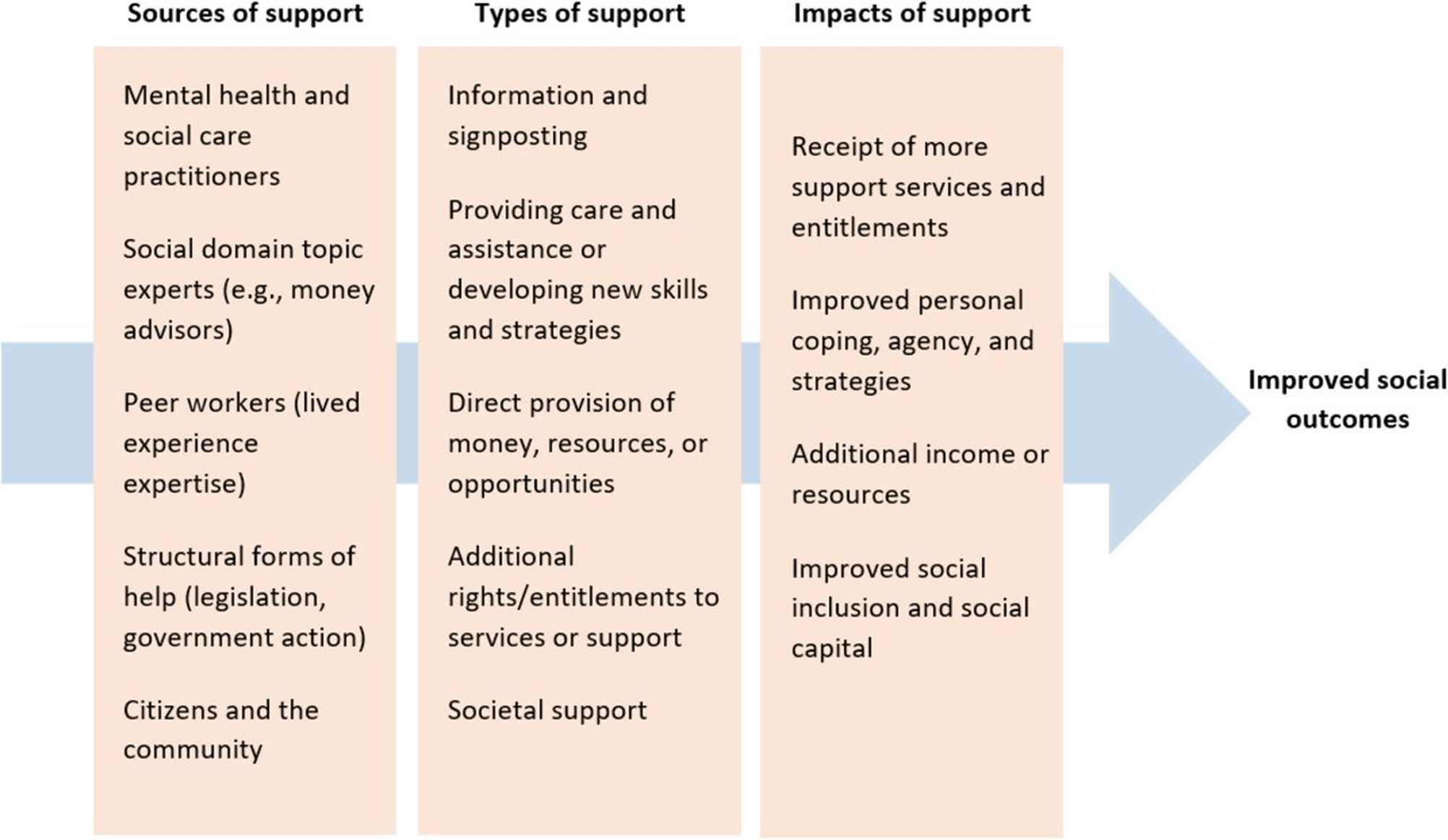Practical and social interventions
- Social exclusion has a negative impact on people’s mental health. Likewise, people with serious mental health conditions are more likely to face social exclusion and have poorer social outcomes, such as in terms of housing and employment (Appleton et al., 2023).
- Social interventions support people with other issues that may be impacting their lives, such as housing, work and education. This can be just as important to people’s recovery as clinical interventions. These interventions can also help to address inequalities.
- Social interventions should include population-level measures to enhance community assets which prevent poor mental health and promote health behaviours, such as high-quality housing and employment (Public Health England, 2019).
There is a range of different types of social interventions, with the framework below highlighting that support can come from a range of different sources; but often falls within 5 broad types. There are a range of potential impacts, with some interventions (such as IPS) providing multiple support types and having a wide range of benefits.
Figure 76: Framework of sources and types of social interventions. Image source: Appleton et al. 2023
One model for thinking about ‘societal support’ is community-centred approaches. These use assets within communities to promote community health and wellbeing and increase people’s control over their health and lives (South et al., 2019). This includes (South et al., 2019):
- Strengthening communities: approaches which build on community resources to improve health and social determinants of health, such as time banking and asset-based approaches.
- Volunteer and peer roles: approaches where individuals provide support, advice or organise activities in their own or other communities, such as peer support, volunteer-led schemes and befriending.
- Collaborations and partnerships: approaches where communities and local services work together, such as co-produced work and local forums.
- Access to community resources: approaches which connect individuals to community resources, such as social prescribing or community groups in local libraries.
Figure 77: Family of community-centres approaches. Image source: Public Health England
Additional resources
- The local data packs give an overview of prevalence and service use
- Health and wellbeing: a guide to community-centred approaches
References
Full list of references is included at the end of this chapter.


